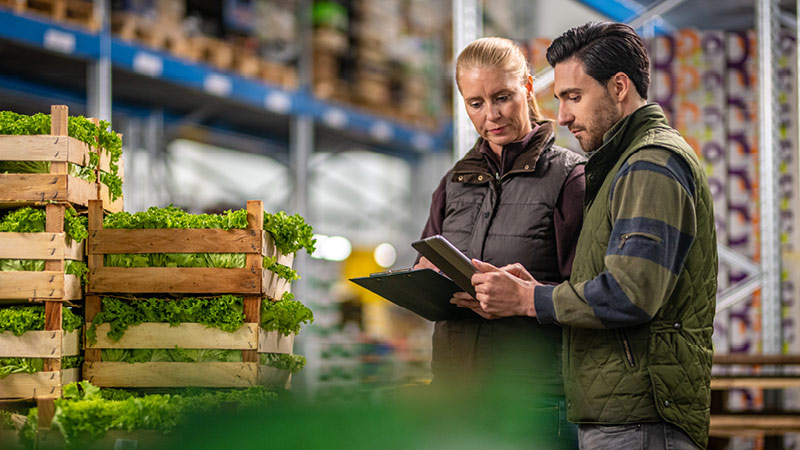Recent Trade & Tariff Perspectives
January 19, 2023 | Brittney Lubinsky Product Development Manager

The United States and Canada share the world’s longest international border, 5,525 miles with 120 land ports-of-entry, and nearly $2.6 billion in goods and services are traded every day. In 2022, Canada was the United States’ largest trading partner.
If your organization is one of the many that transports goods by truck across the U.S. Canadian border, or is looking to start, consider the following to ensure a seamless experience.
There are two key differences when shipping goods by truck rather than air into the United States from Canada: lead times and the Pre-Arrival Processing System (PAPS) number.
Lead times can be as short as one hour from the time of pickup to arrival at the U.S. border. This is an advantage when you need your goods quickly, but short lead times mean your customs entries need to be cleared quickly and in advance of the driver arriving to the border. Issues with the customs clearance can result in delays at the border that last hours or even weeks. In some cases, such issues also can risk your shipment being rejected and returned.
In addition, trucks entering the United States use a PAPS number, a type of Shipment Control Number (SCN) that the carrier assigns to a shipment at the time of pickup. The PAPS number provides the details of the shipment entering the United States and typically is submitted to the customs broker with a barcode. The number links the electronic customs entry information from the customs broker to the carrier’s PAPS number once it is submitted to U.S. Customs and Border Protection (CBP).
To avoid costly delays, the process of assigning the PAPS number and getting the customs entry cleared must take place in advance of the driver arriving to the border.
Whether you are arranging your own carrier or using a third-party logistics (3PL) company, you will need a carrier with experience moving goods by truck across the border from Canada. That experience will include an understanding of the key differences, such as the preparation and utilization of a PAPS number. Hours of service also differ from Canada to the United States.
C.H. Robinson has an extensive carrier network and can simplify the process of finding a qualified carrier. C.H. Robinson also simplifies the process for carriers through the online PAPS Tracker, which helps mitigate the potential of costly delays at the border. The online tracker provides real-time customs clearance tracking for carriers, so they know when the clearance is ready and can dispatch a driver to the border.
Just like an experienced carrier, working with an experienced customs broker can help with timely release of your freight.
With short lead times, proactive preparation is crucial to having a seamless experience. Many hang-ups with processing the clearance occur due to issues with the commercial documentation needed for clearance. Use C.H. Robinson’s comprehensive 20-point Customs Clearance Checklist to prepare. Work with your business partners by providing clear instructions on what your customs broker will need prior to shipping the goods.
Goods from Canada into the United States also need to be classified with a Harmonized Tariff Schedule of the United States (HTSUS) code. CBP makes continuous updates to the Harmonized Tariff Schedule (HTSUS). Even slight modifications to the HTSUS code can delay clearance at the border as your products may now require additional information for clearance. If you need assistance reviewing or classifying your products, C.H. Robinson has a dedicated classification team that can help.
In addition to CBP, the Partner Government Agencies (PGAs) regulate many goods. For this reason, CBP has a two-step process for regulated products imported into the United States. First, there is an initial review of the customs entry to assess compliance with customs laws. At that time, CBP may conditionally release the goods and allow the driver to enter the United States.
However, the entry is not fully released until the PGA issues a final admissibility decision and releases the goods. If the goods do not comply, they may be refused entry or asked to return to the border for examination at the importer’s expense. In such cases, CBP has issued a release on the customs entry, but the PGA has not, which means your entry remains on hold. This makes tracking your shipment and clearance status crucial.
C.H. Robinson’s Navisphere® digital platform provides real-time tracking of the customs entry status and details, including PGA clearance status. You can quickly and easily view the details of your customs entry, including your landed cost and SKU-level details, within your Navisphere account.
Moving goods by truck from Canada is fast-paced and any potential delays can make an otherwise quick process to ship goods long and costly. C.H. Robinson has a dedicated northern border team that can help. Connect with one of our Trusted Advisor® experts to learn more.
Our information is compiled from a number of sources that to the best of our knowledge are accurate and correct. It is always the intent of our company to present accurate information. C.H. Robinson accepts no liability or responsibility for the information published herein.
Review recent perspectives
- March 2 | Customs and Trade Policy Developments We’re Following This Month
- February 16 | Transporting goods inside Mexico. Are you complying with Complemento Carta Porte?
- February 2 | Canada to U.S. Shipments: Your Guide to Reducing Import Costs
- January 19 | Importing into the United States from Canada? Here’s What You Need to Know
